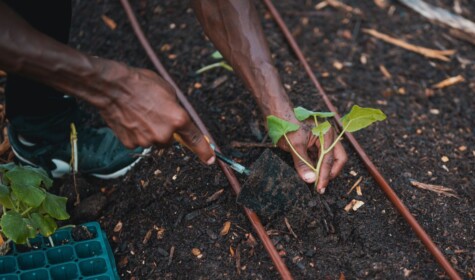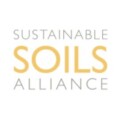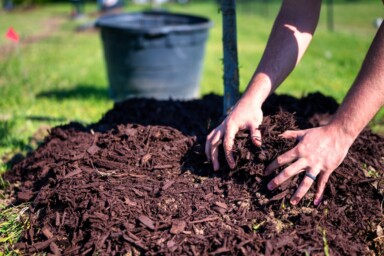The Sustainable Soils Alliance (SSA) is a partnership of farming organisations, businesses, NGOs, applied science and academia, working together to reverse the current soils crisis and restore our soils to health within one generation. This task is not a small one; soils are the fundamental bedrock of all life on earth, with 95% of the food we eat coming from it, either directly or indirectly. Yet, in the UK, soils are being lost ten times faster than they are being created, and generations of neglect at the policy level has left soil research critically underfunded. Of the public money spent on monitoring the health and quality of three principal environmental indicators in England – air, soil and water – soil receives just 0.4%.
At the time of our launch in 2017, there was no fit-for-purpose policy strategy in place for soil across the four nations of the UK – no standards, monitoring or targets that might safeguard it in a world that puts ever increasing pressure on our natural resources. The proposed EU Soil Framework Directive – the traditional instrument for national policy and investment – was rejected by EU governments in 2014. It was the only environmental Directive ever to suffer such a fate. The continuing lack of a common policy framework for assessing and protecting our soils has perpetuated a siloing of work, research and a general lack of coordination among the numerous sectors involved in soil.
The Work of SSA
In response to these challenges, the organisational approach of the SSA is very simple and targeted. We look to build bridges and common purpose across sectors, and critically between science and policy – urging the development of policies for soil that are clear, consistent and ambitious, and helping to design them and put them into action. We organise our approach around the four main areas where we feel government is best suited to take the lead, namely:
- monitoring and measuring
- incentivisation of long-term improvement
- regulating against degradation
- education, advice and guidance
We are happy to have lobbied government for these policy pillars and helped develop important wins in the area. Examples of this are the inclusion of soil in the Agriculture Act 2020, which opened the door to the Government paying farmers to improve their soils, and the announcement of an imminent Soil Health Action Plan for England.
Approaches to Measuring Soil Health
Despite recent advances in soils policy, we still lack a common framework by which to actually assess what it means for soils to be healthy. There have been numerous initiatives – both inside and outside government – aimed at identifying a golden list of the principal metrics by which to measure soil health, to the extent that many soil scientists have become weary over perpetual discussion around what metrics to include, because they believe this job to be already done.
The core metrics are in principle already agreed upon, as most initiatives coalesce around organic matter, soil structure and earthworm counts, with some throwing in pH as the fail-safe combination needed for basic soil health assessment. Where agreement and collaboration are far less evident, is in the how, where, when, why, and so what now of it all. How to take these agreed soil metrics and put them into practice – how to understand what soil measurement actually tells us – and what we should do about it.
The ultimate reason for this lack of a common framework is that that government has not taken the lead here and consequently stakeholders across all other sectors involved in soil have failed to communicate effectively between themselves. This has led to disparate benchmarks and methodologies, inconsistent results and diverse interpretations. While some assessments of soil health align results to soil texture (heavy, medium, sandy, etc), others may be thinking in terms of soil types (which take drainage and function into consideration); some may measure organic matter to 15 cm, others to 40 cm; some benchmarks may be worked out according to geographical rainfall levels, others to land use.
Stripping this back a layer, the picture is further muddled by a lack of consistency in identifying soils themselves, as there is considerable variation between how different people and institutions define soil type. Some use texture to quantify soil type in the topsoil, while others recognise that texture often varies below 30 cm across a field, whilst the topsoil texture is constant.
Efforts are further hampered by the lack of publicly available national soil maps for England and Wales that would provide an agreed base layer from which to build. Without a consistent framework and methodology, the results and data from soil assessments – whatever the indicator used – are hard to interpret, and harder still to aggregate with others. Ultimately, this means it is difficult to promote confidence among farmers in adopting and investing in soil health assessment at all.
The Future of Soils Policy
This current lack of alignment cascades through industry – from farming to agronomy, even rippling out through the supply chain. It acts as a critical barrier to joined-up decision making and communication about how to look after soil, the impacts on it, and how to capitalise on soil opportunities. Common agreed metrics defining soil health already exist, what is needed now is a consistent framework in which to apply them, without which any data collected by farmers, scientists or agronomists is meaningless at the more holistic scale where cohesion is needed.
The role the SSA seeks to play here is to enable discussion and agreement about what the critical defining principles should be. Our ambition over the coming months is to convene industry members, specialists, academics and NGOs, and consult policy makers to achieve this alignment. By reaching agreement on the underlying structures needed, meaningful interpretation of soil health assessment should be made possible in a way that recognises the variation in contexts across crops, climates, soil types and motivations.
We hope this will enable a universal approach, that injects rigour and confidence into how we assess our soils and our impacts upon them. We hope this will provide the tools for policymakers to develop ambitious and impactful policies, and to show the general public the importance of the changing state of soils. We believe it will help reassure farmers that they are measuring their soils for the right reasons, and that those measurements will allow them to identify practices that improve both soils and yields. We hope this will also engage the supply chain in monitoring their impacts on soil health consistently, and also to enable new income streams to be unlocked for land managers to reflect the environmental improvement healthy soils can deliver.
To find out more about our work, please visit our website here.







